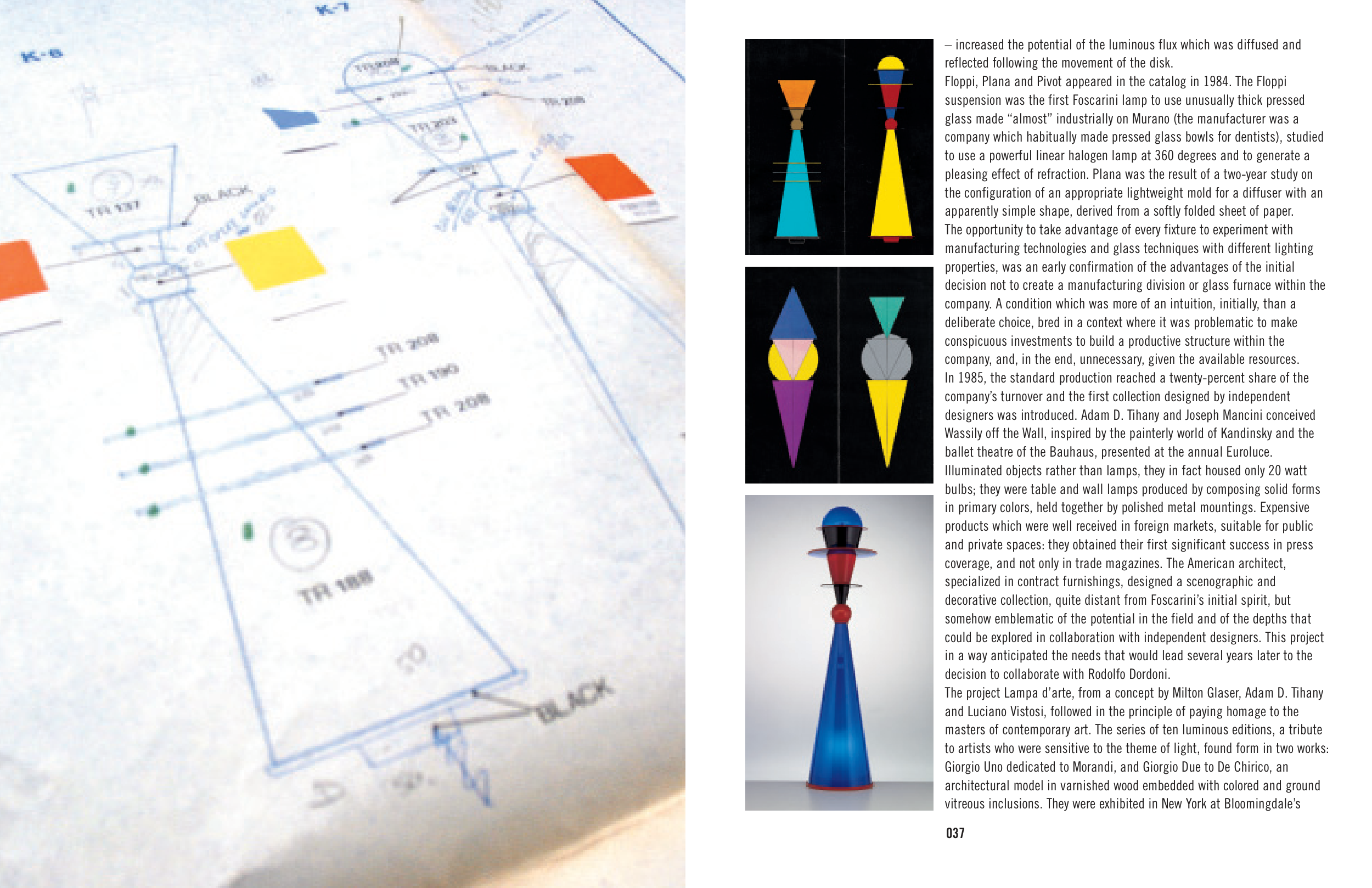037
– increased the potential of the luminous flux which was diffused and
reflected following the movement of the disk.
Floppi, Plana and Pivot appeared in the catalog in 1984. The Floppi
suspension was the first Foscarini lamp to use unusually thick pressed
glass made “almost” industrially on Murano (the manufacturer was a
company which habitually made pressed glass bowls for dentists), studied
to use a powerful linear halogen lamp at 360 degrees and to generate a
pleasing effect of refraction. Plana was the result of a two-year study on
the configuration of an appropriate lightweight mold for a diffuser with an
apparently simple shape, derived from a softly folded sheet of paper.
The opportunity to take advantage of every fixture to experiment with
manufacturing technologies and glass techniques with different lighting
properties, was an early confirmation of the advantages of the initial
decision not to create a manufacturing division or glass furnace within the
company. A condition which was more of an intuition, initially, than a
deliberate choice, bred in a context where it was problematic to make
conspicuous investments to build a productive structure within the
company, and, in the end, unnecessary, given the available resources.
In 1985, the standard production reached a twenty-percent share of the
company’s turnover and the first collection designed by independent
designers was introduced. Adam D. Tihany and Joseph Mancini conceived
Wassily off the Wall, inspired by the painterly world of Kandinsky and the
ballet theatre of the Bauhaus, presented at the annual Euroluce.
Illuminated objects rather than lamps, they in fact housed only 20 watt
bulbs; they were table and wall lamps produced by composing solid forms
in primary colors, held together by polished metal mountings. Expensive
products which were well received in foreign markets, suitable for public
and private spaces: they obtained their first significant success in press
coverage, and not only in trade magazines. The American architect,
specialized in contract furnishings, designed a scenographic and
decorative collection, quite distant from Foscarini’s initial spirit, but
somehow emblematic of the potential in the field and of the depths that
could be explored in collaboration with independent designers. This project
in a way anticipated the needs that would lead several years later to the
decision to collaborate with Rodolfo Dordoni.
The project Lampa d’arte, from a concept by Milton Glaser, Adam D. Tihany
and Luciano Vistosi, followed in the principle of paying homage to the
masters of contemporary art. The series of ten luminous editions, a tribute
to artists who were sensitive to the theme of light, found form in two works:
Giorgio Uno dedicated to Morandi, and Giorgio Due to De Chirico, an
architectural model in varnished wood embedded with colored and ground
vitreous inclusions. They were exhibited in New York at Bloomingdale’s


